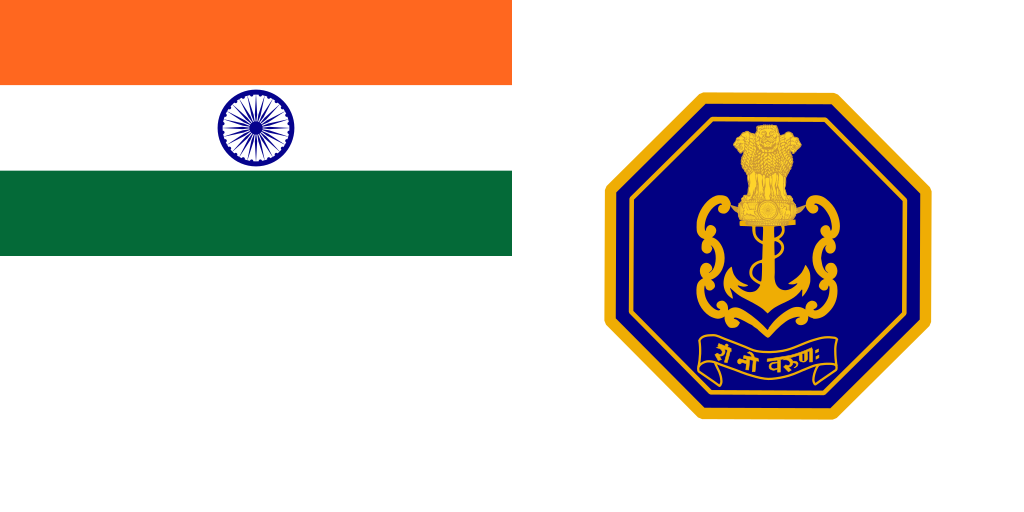The new ensign of the Indian Navy symbolizes the complete independence of India by dropping the St. George Cross and adopting Chhatrapati Shivaji’s seal. It means it is a victory of our freedom fighters over colonization.

On the 2nd of September, Prime Minister Narendra Modi unveiled the Indian Navy’s new ensign, or Nishaan, in Kochi, on the sidelines of the commissioning of INS Vikrant. The new ensign of the Indian Navy has been designed with inspiration from the seal of the great Indian emperor Chhatrapati Shivaji Maharaj. The newly introduced ensign features the national emblem on a blue octagon-shaped background with the below scripted ‘Sham no Varunah’ and the Tricolor on the upper canton (top left corner of the flag). The Navy dropped the earlier pre-Independence ensign with the St. George’s cross on a white background.

Chhatrapati Shivaji Maharaj- the father of the Indian Navy
It is said that Chhatrapati Shivaji Maharaj is the father of the Indian Navy. From 1657 to 1659, he laid the foundation of the Indian naval fleet by building it from scratch while negotiating technology and the prowess of the Portuguese, Dutch, and British, who controlled the Indian coastlines in the 17th century.
He started with the voyage of creating a naval force with 160 merchants and got it to around 700 merchants. He began arranging his navy by buying twenty galivants from the shipyard of the Portuguese. As Marathi record books and journals depict, Shivaji’s fleet counted around 400 warships. He extended his search for qualified and worthy crew for his ships. He involved people who stayed and worked by the sea and were quite familiar with naval operations. He also hired Portuguese sailors and Goan Christians for his naval force.
He built a strong naval presence across the coasts of Goa and Konkan to protect sea trade. He built his first marine fort at Sindhudurg, the first headquarters of the Maratha Naval Force. He built several sea bases, forts, a shelter for the soldiers, and storage for trading materials in coastal areas. Shivaji fought numerous battles and went on to broaden his navy.
Kanhoji Angre’s connection with the Navy
Kanhoji Agre was the undefeated chief of the Maratha Navy during the eighteenth century. He was the undisputed master of the sea on the western coast of India. He learned the technique of making ships with the help of a Portuguese craftsman and laid the foundation for the mightiest navy of medieval India.
Under his leadership, the Maratha army attacked and harassed the British, Dutch, and Portuguese navies. He used ships to protect Maratha merchants from the pirates operating in Malabar and to secure the sovereignty of the sea. Kanhoji set up a base in Colaba island fort. He compelled the foreign traders to buy a pass or a license issued by him to enter the Indian waters.
The Dutch and Jamaicans came to work on his ships. He forced the British to form a naval force, which evolved into the modern Indian Navy. An Indian Naval submarine was named after him for his contribution to Shivaji’s Navy.

The need to change the old ensign
Since 2014, the old ensign of the Navy has featured a white flag with horizontal and vertical red stripes, symbolizing the Cross of Saint George, with the Ashoka emblem and the words “Satyameva Jayate.” The tricolor is placed in the top right corner. The ensign of the Indian Navy has been changed four times since 1950. In the ensign, this time St George’s Cross was being taken out.
St George’s Cross reminded us of the colonial past of India. So as to reduce the burden of a colonial past, the Indian Navy officials believe that, with the ongoing national endeavor to move away from the colonial past, a need was felt to transition to a new design that drew inspiration from India’s history.
Whether they are great warriors like Chhatrapati Shivaji Maharaj, Kanhoji Angre, or any freedom fighter, everyone’s contribution was very important to letting India out of the slavery of the Portuguese, Dutch, and British. Such changes are also needed to honor their contributions and to make today’s younger generation aware of their bravery and patriotism. The seal of the great Chhatrapati Shivaji will always inspire and encourage our naval officers to fight their enemies with patriotism and zeal.













